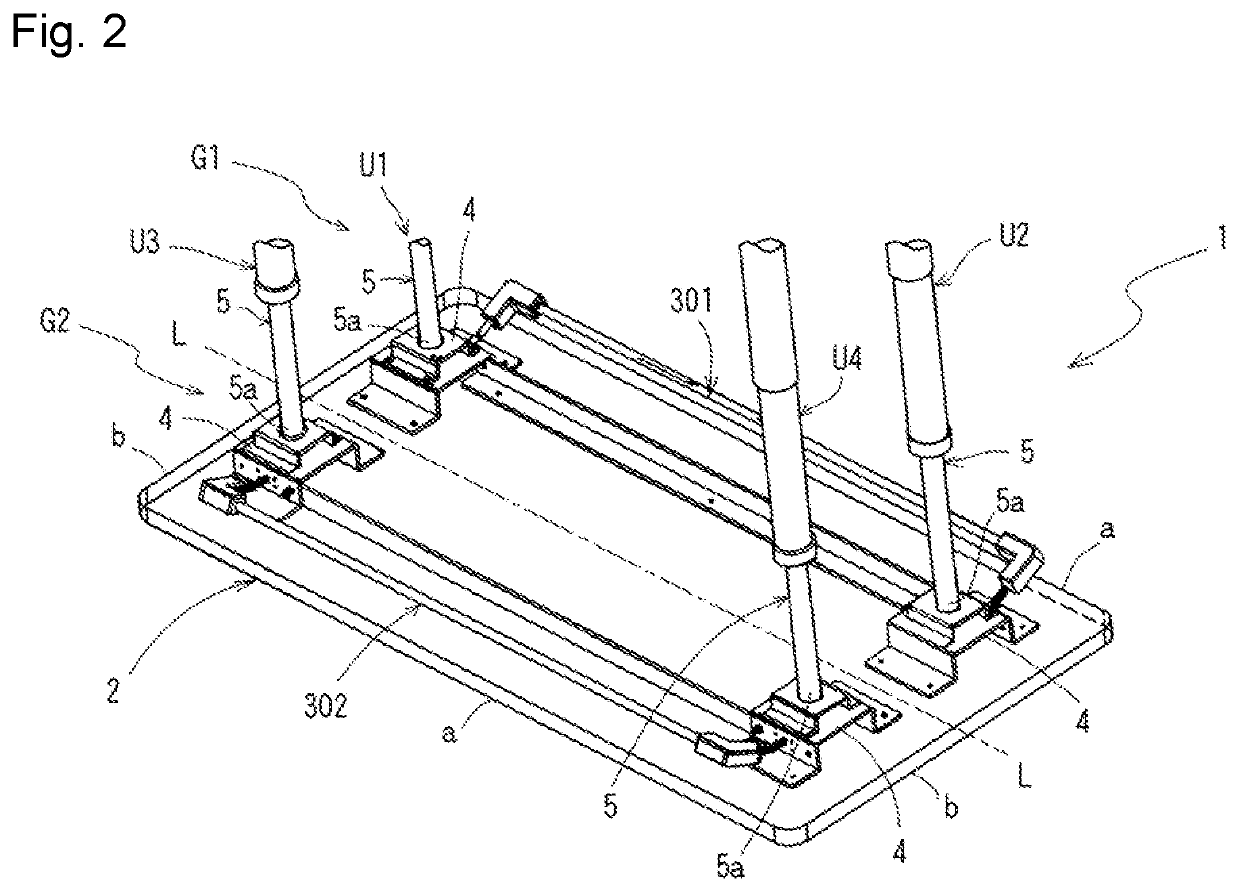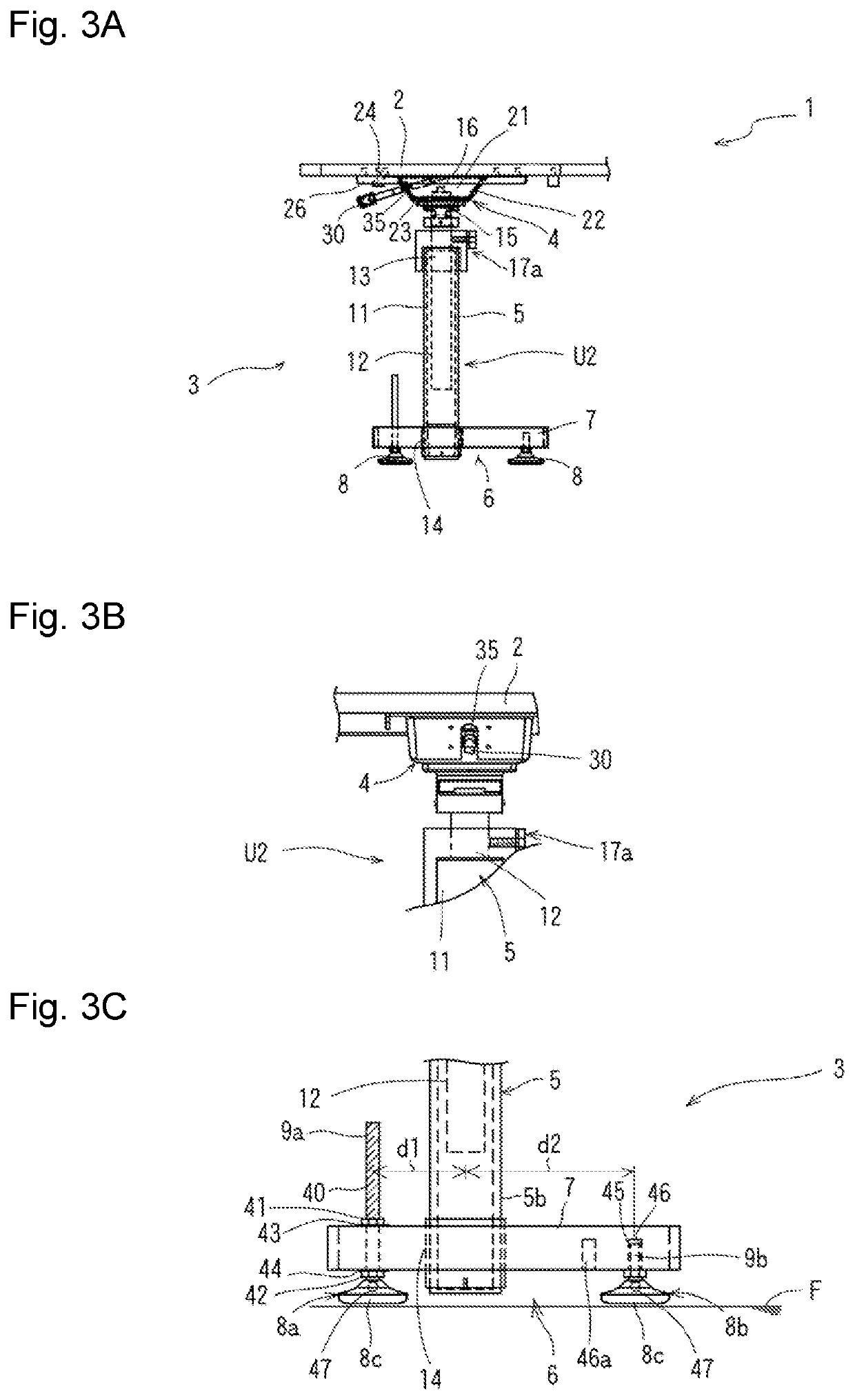Table
a technology for tables and chairs, applied in the field of tables, can solve the problems of increasing costs, affecting the quality of tables, and the keyboard base of the workstation is not directly supported, and achieves the effect of simple structure and easy adjustment of height and tilt of the top pla
- Summary
- Abstract
- Description
- Claims
- Application Information
AI Technical Summary
Benefits of technology
Problems solved by technology
Method used
Image
Examples
Embodiment Construction
[0056]Referring now to the embodiments of the invention shown in the attached drawings, FIGS. 1A-5B are drawings representing an embodiment of the table. FIGS. 1A-1C show a perspective view and a side view of the first embodiment of the table according to the present invention. FIG. 2 shows a perspective view representing a portion of the table when viewed from the inside. FIGS. 3A-3C show the leg unit of this table, i.e., a leg structure including a support column and a foot section, and a top plate receiving structure for connecting the top plate and the support column. FIGS. 5A-5B are explanatory views showing the inclination of the top plate of the table.
[0057]FIGS. 1A-1C represent an implementation example of the table according to the present invention. FIG. 1A is a perspective view showing the table in which the top plate is in a high position and in a horizontal state, FIG. 1B is a side view thereof, and FIG. 1C is a side view showing the table in which the top plate is in a...
PUM
 Login to view more
Login to view more Abstract
Description
Claims
Application Information
 Login to view more
Login to view more - R&D Engineer
- R&D Manager
- IP Professional
- Industry Leading Data Capabilities
- Powerful AI technology
- Patent DNA Extraction
Browse by: Latest US Patents, China's latest patents, Technical Efficacy Thesaurus, Application Domain, Technology Topic.
© 2024 PatSnap. All rights reserved.Legal|Privacy policy|Modern Slavery Act Transparency Statement|Sitemap



